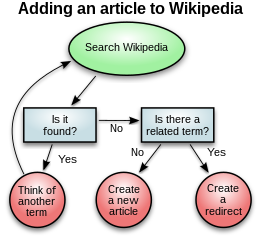Diagram: Difference between revisions
+da |
m →Overview: changed 'by show' to 'by showing' |
||
| Line 7: | Line 7: | ||
In science the term is used in both ways. For example Anderson (1997) stated more generally: "diagrams are pictorial, yet abstract, representations of information, and [[map]]s, [[line graph]]s, [[bar chart]]s, [[engineering]] [[blueprint]]s, and [[architect]]s' [[Sketch (drawing)|sketch]]es are all examples of diagrams, whereas photographs and video are not".<ref name="MA97">Michael Anderson (1997). [http://zeus.cs.hartford.edu/~anderson/intro.html "Introduction to Diagrammatic Reasoning"]. Retrieved 21 July 2008.</ref> On the other hand Lowe (1993) defined diagrams as specifically "abstract graphic portrayals of the subject matter they represent".<ref name= "RKL 93">{{cite journal |last=Lowe |first=Richard K. |year=1993 |title=Diagrammatic information: techniques for exploring its mental representation and processing |journal=Information Design Journal |volume=7 |issue=1 |pages=3–18 |doi=10.1075/idj.7.1.01low}}</ref> |
In science the term is used in both ways. For example Anderson (1997) stated more generally: "diagrams are pictorial, yet abstract, representations of information, and [[map]]s, [[line graph]]s, [[bar chart]]s, [[engineering]] [[blueprint]]s, and [[architect]]s' [[Sketch (drawing)|sketch]]es are all examples of diagrams, whereas photographs and video are not".<ref name="MA97">Michael Anderson (1997). [http://zeus.cs.hartford.edu/~anderson/intro.html "Introduction to Diagrammatic Reasoning"]. Retrieved 21 July 2008.</ref> On the other hand Lowe (1993) defined diagrams as specifically "abstract graphic portrayals of the subject matter they represent".<ref name= "RKL 93">{{cite journal |last=Lowe |first=Richard K. |year=1993 |title=Diagrammatic information: techniques for exploring its mental representation and processing |journal=Information Design Journal |volume=7 |issue=1 |pages=3–18 |doi=10.1075/idj.7.1.01low}}</ref> |
||
In the specific sense diagrams and charts contrast [[computer graphics]], technical illustrations, [[infographics]], maps, and [[technical drawing]]s, by |
In the specific sense diagrams and charts contrast [[computer graphics]], technical illustrations, [[infographics]], maps, and [[technical drawing]]s, by showing "abstract rather than [[literal translation|literal]] representations of information".<ref name = "LEB 03">{{cite book |first=Lee E. |last=Brasseur |authorlink=Lee E. Brasseur |title=Visualizing technical information: a cultural critique |publisher=Baywood Pub |location=Amityville, N.Y |year=2003 |isbn=0-89503-240-6}}</ref> The essences of a diagram can be seen as:<ref name = "LEB 03"/> |
||
* a ''form'' of visual [[Content format|format]]ting devices |
* a ''form'' of visual [[Content format|format]]ting devices |
||
* a ''display'' that do not show [[quantitative data]], but rather relationships and abstract information |
* a ''display'' that do not show [[quantitative data]], but rather relationships and abstract information |
||
Revision as of 09:26, 13 June 2012

A diagram is a two-dimensional geometric symbolic representation of information according to some visualization technique. Sometimes, the technique uses a three-dimensional visualization which is then projected onto the two-dimensional surface. The word graph is sometimes used as a synonym for diagram.
Overview
In science the term is used in both ways. For example Anderson (1997) stated more generally: "diagrams are pictorial, yet abstract, representations of information, and maps, line graphs, bar charts, engineering blueprints, and architects' sketches are all examples of diagrams, whereas photographs and video are not".[1] On the other hand Lowe (1993) defined diagrams as specifically "abstract graphic portrayals of the subject matter they represent".[2]
In the specific sense diagrams and charts contrast computer graphics, technical illustrations, infographics, maps, and technical drawings, by showing "abstract rather than literal representations of information".[3] The essences of a diagram can be seen as:[3]
- a form of visual formatting devices
- a display that do not show quantitative data, but rather relationships and abstract information
- with building blocks such as geometrical shapes connected by lines, arrows, or other visual links.
Or in Hall's (1996) words "diagrams are simplified figures, caricatures in a way, intended to convey essential meaning".[4] These simplified figures are often based on set of rules. The basic shape according to White (1984) can be characterized in terms of "elegance, clarity, ease, pattern, simplicity, and validity".[3] The elegance for a start is determined by whether or not the diagram is "the simplest and most fitting solution to a problem".[5]
Main diagram types
There are at least the following types of diagrams:
- Graph-based diagrams: these take a collection of items and relationships between them, and express them by giving each item a 2D position, while the relationships are expressed as connections between the items or overlaps between the items; examples of such techniques:
|
|
- Chart-like diagram techniques, which display a relationship between two variables that take either discrete or a continuous ranges of values; examples:
|
|
- Other types of diagrams, e.g.,
|
|
Many of these types of diagrams are commonly generated using diagramming software. Thousands of diagram techniques exist. Some more examples follow.
Specific diagram types
See also
- Chart
- Diagramming Software
- Diagrammatic reasoning
- List of graphical methods
- Mathematical diagram
- Plot (graphics)
- commons:Specific diagram types - gallery of many diagram types.
- commons:Commons:Diagram resources
References
- ^ Michael Anderson (1997). "Introduction to Diagrammatic Reasoning". Retrieved 21 July 2008.
- ^ Lowe, Richard K. (1993). "Diagrammatic information: techniques for exploring its mental representation and processing". Information Design Journal. 7 (1): 3–18. doi:10.1075/idj.7.1.01low.
- ^ a b c Brasseur, Lee E. (2003). Visualizing technical information: a cultural critique. Amityville, N.Y: Baywood Pub. ISBN 0-89503-240-6.
- ^ Bert S. Hall (1996). "The Didactic and the Elegant: Some Thoughts on Scientific and Technological Illustrations in the Middle Ages and Renaissance". in: B. Braigie (ed.) Picturing knowledge: historical and philosophical problems concerning the use of art in science. Toronto: University of Toronto Press. p.9
- ^ White, Jan V. (1984). Using charts and graphs: 1000 ideas for visual persuasion. New York: Bowker. ISBN 0-8352-1894-5.
- ^ HIPO diagram
Further reading
- Bounford, Trevor (2000). Digital diagrams. New York: Watson-Guptill Publications. ISBN 978-0-8230-1572-6.
- Michael Anderson, Peter Cheng, Volker Haarslev (Eds.) (2000). Theory and Application of Diagrams: First International Conference, Diagrams 2000. Edinburgh, Scotland, UK, September 1–3, 2000. Proceedings.













